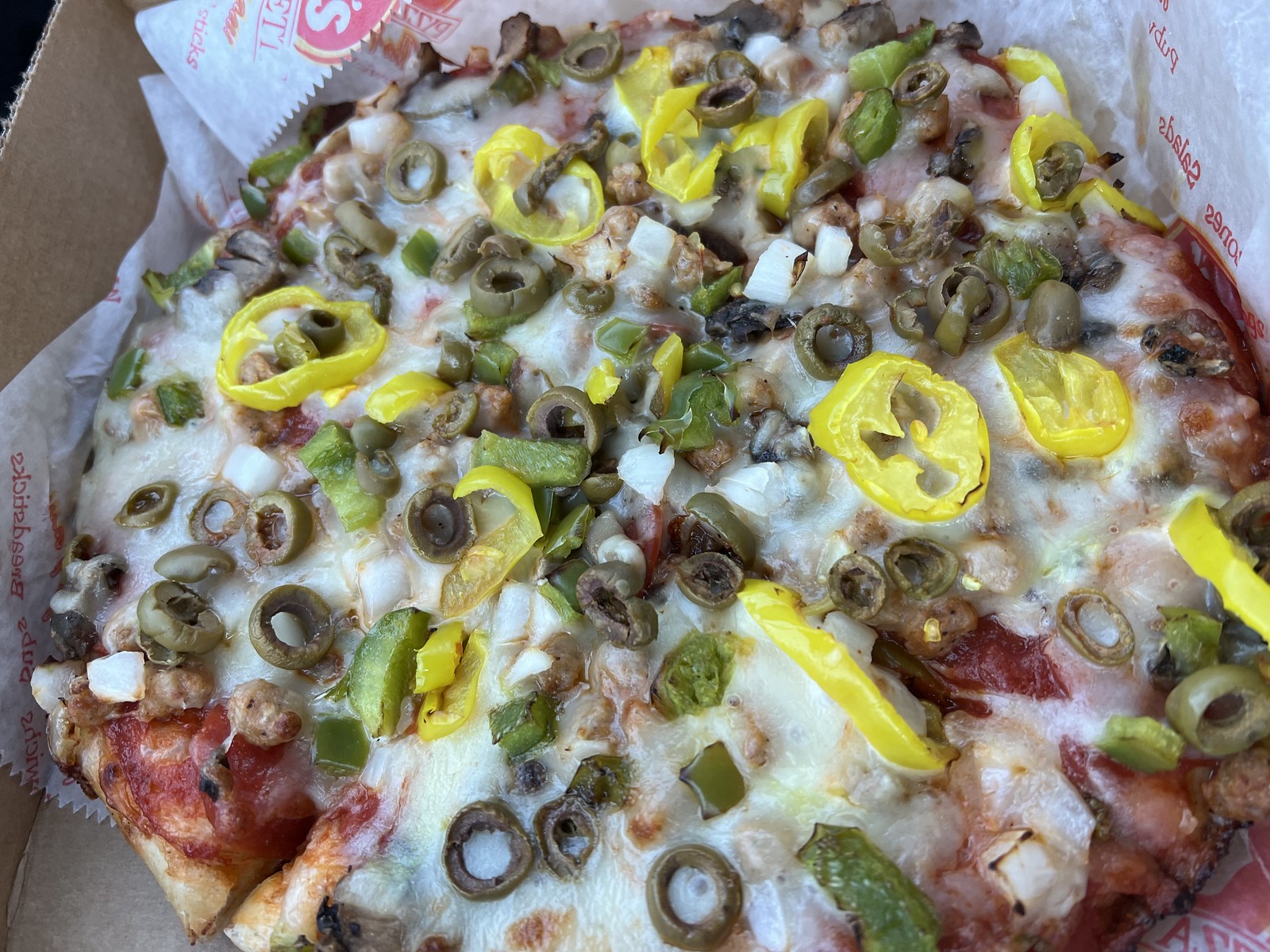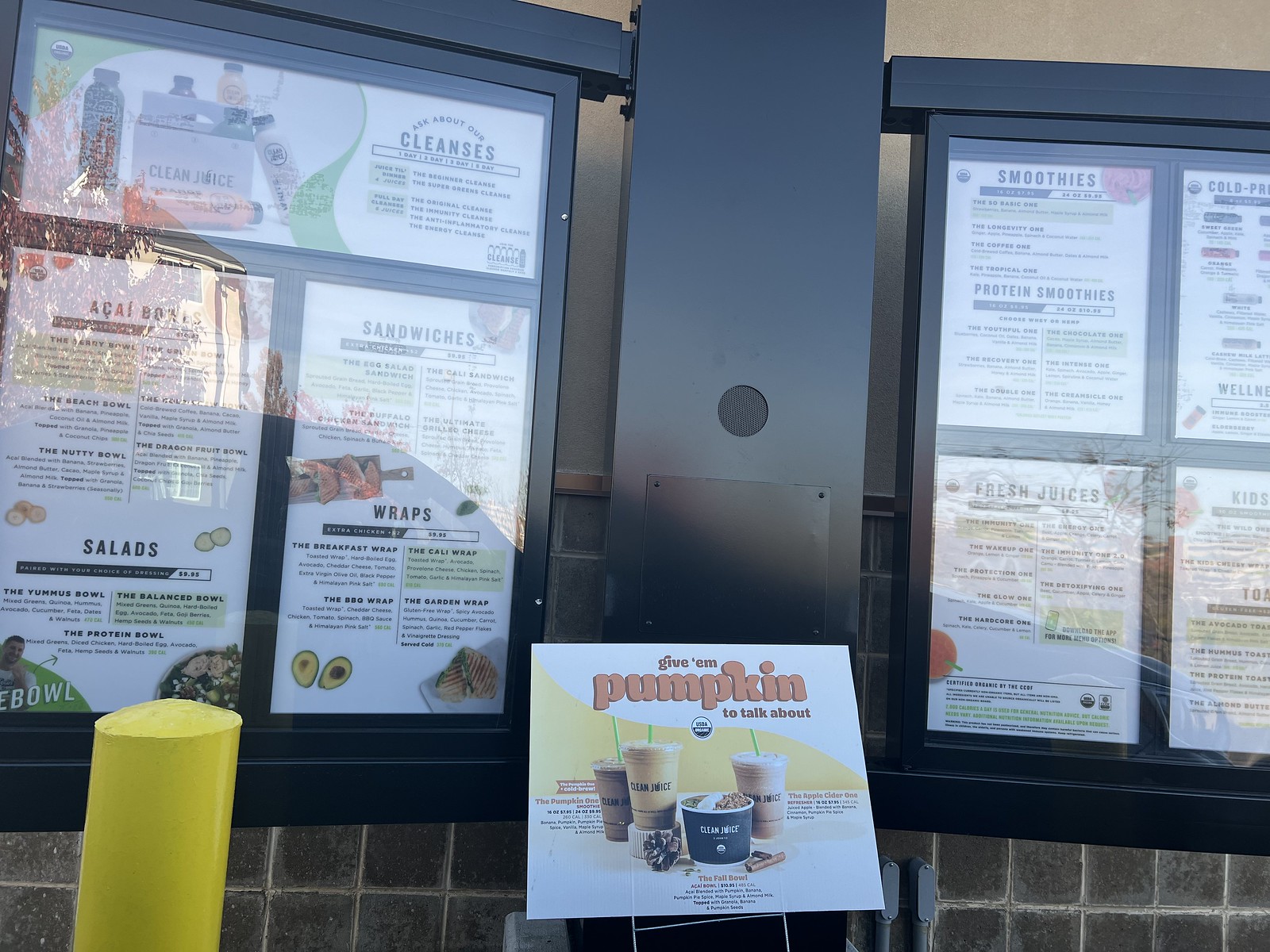
Let's take a quick trip to the most southern Gino's location in West Virginia. At this point, I've either been exposed to Gino's enough that I enjoy it, or it's just pretty decent.

Either way, I went with a deluxe pizza, which has pepperoni, sausage, mushrooms, green peppers, banana peppers, green olives and onions. I've also realized how much I liked this combo as an adult. As a kid, never. But all of the flavors together are pretty good. This one was a bit heavy on the green olives - which I like - but it was the dominant flavor.
Grade: B

My latest J.Q. Dickinson Appalachian Mercantile box contained the following:

Charleston Bee Works - Almond Biscotti Lotion Bar
Handmade with love in Charleston, West Virginia. This solid lotion bar is excellent for soothing and nourishing dry skin. Made of high quality ingredients and beeswax, these bars are an essential item for your carryall. A lovely addition to your bag, sink or bedside, simply warm between your hands and apply to areas of dry skin.
J.Q. Dickinson Salt-Works - Salt & Pepper Peanuts
In partnership with Belmont Peanuts, these amazing hand cooked Virginia peanuts have a fresh, crunchy, crispy flavor. Available in three great flavors, Salted, Salt & Pepper, and Toffee Crunch.
Emily Ruth Prints - Swedish Style Dish Cloth
our surface patterns created using hand-carved stamps are folksy, fun, and perfectly imperfect. they are designed to accompany you in your daily life and hope to bring a sense of wonder and calm to your home.
Postre - Caramel Pop
Loved as much by adults as kids, this is the best lollipop you have ever had - full of rich caramel flavor. No junk, just organic cane sugar and sea salt.
Epic Pickle - Garlic Dill Pickle Spears
These pickles were made using a combo of whole and minced garlic, dill and peppercorns to add just the right flavor to cucumber chips and spears. Handcrafted in York County, Pennsylvania. 1 quart jar
Firsthand Coffee - Organic Coffee

Clean Juice is a smoothie/avo toast/juice shop in Bridgeport that has locations nationwide.

I had to head to Bridgeport for an all-day retreat and needed some fuel. Easy peasy. One: I went with The So Basic One smoothie because it has organic almond butter, organic almond milk, organic banana, organic maple syrup and organic strawberries. It's fresh, sweet and still fairly healthy. I managed to slurp it all down before taking a photo, but just imagine a pink drink. Then try it.

For some noms, I ordered the avocado toast, which has organic avocado, organic lemon, organic olive oil, organic red pepper flakes, organic himalayan pink salt and I added feta cheese. Avocado toast can be hit or miss with me. This one had nice flavor and texture, which are key. Feta is necessary.
Grade: A

Here's my latest column for the Charleston Gazette-Mail:
When I hear “sumac,” I instantly think of poison sumac.
Then, I try to remember the “leaves of three, let it be” rhyme and conjure up images in my head of what poison ivy, oak and sumac look like.
For reference, if you’re curious, too: “Poison ivy is the only one that always has three leaves, one on each side and one in the center. They’re shiny with smooth or slightly notched edges. Poison oak looks similar, but the leaves are larger and more rounded like an oak leaf. They have a textured, hairy surface. There may be groups of three, five, or seven leaves. Poison sumac leaves grow in clusters of seven to 13 leaves, with one by itself at the end,” according to WebMD.
Poison sumac with its white berries is relatively uncommon in the mountains, thankfully.
One variety of non-poisonous sumac, though, staghorn sumac, is fairly ubiquitous across West Virginia and more northern areas. And better yet: It’s edible.
Staghorn sumac has curved panicles and fine, stiff hairs over its berries and branches that resemble buck velvet. Characterized by its bright, crimson berries, the sumac plant has been used in Native American and Middle Eastern medicine and cooking for centuries.
The berries - or drupes - are dried and ground into a deep red powder that can be used as a spice and sprinkled on food over an open fire to impart a lemon flavor to meals - like fish or vegetables. The fruits can also be used to make a drink similar to lemonade or tea by soaking them in cold water. The concentrated juice can also create a delicious marinade for meats.
Whichever the vessel for sumac, the resulting flavor is a bit tart, bright and astringent.
Chefs who are proponents of Appalachian food culture often utilize ingredients like ramps or morels in their menus - but sumac is also finding its way onto those pages, as well.
William Dissen, originally from West Virginia and now chef at Asheville, North Carolina’s The Market Place, makes a cocktail with staghorn sumac that he forages. He dehydrates the plant and creates a syrup from it that he pairs with tequila and cointreau for a take on an Appalachian lemonade.
Asheville Wild Foods owner Ryan Milt uses sumac to make an Appalachian version of za’atar, which is a popular Middle Eastern spice mix that often contains oregano, thyme, marjoram, and toasted sesame seeds.
The spice has been used throughout history, and while some chefs are highlighting this piece of Appalachian food culture, sumac is primarily relegated to foragers and has yet to secure a permanent pantry position for most households in the region.
Let’s change that. And add this historical, versatile spice back into our collective culinary repertoire for Appalachian cooks.
You can find ground sumac in many international grocery stores in Middle Eastern aisles. Try it wherever you might typically add lemon to a dish: trout with dill, hummus with veggies, chicken with olives.
The world is your oyster - or, your spice. Let me know your favorite new use for sumac.
*PLEASE NOTE: I do not encourage anyone from preparing or consuming wild food unless you know how and are confident in your ability. This column is not intended to serve as a guide in preparing the food but rather is shared to document the cultural significance of the food.
All work property of Candace Nelson. Powered by Blogger.










